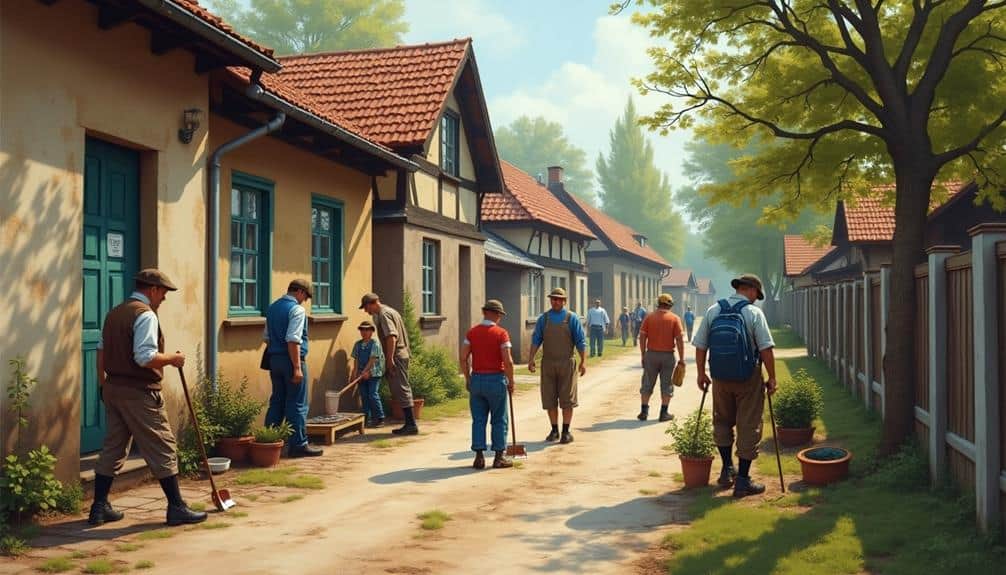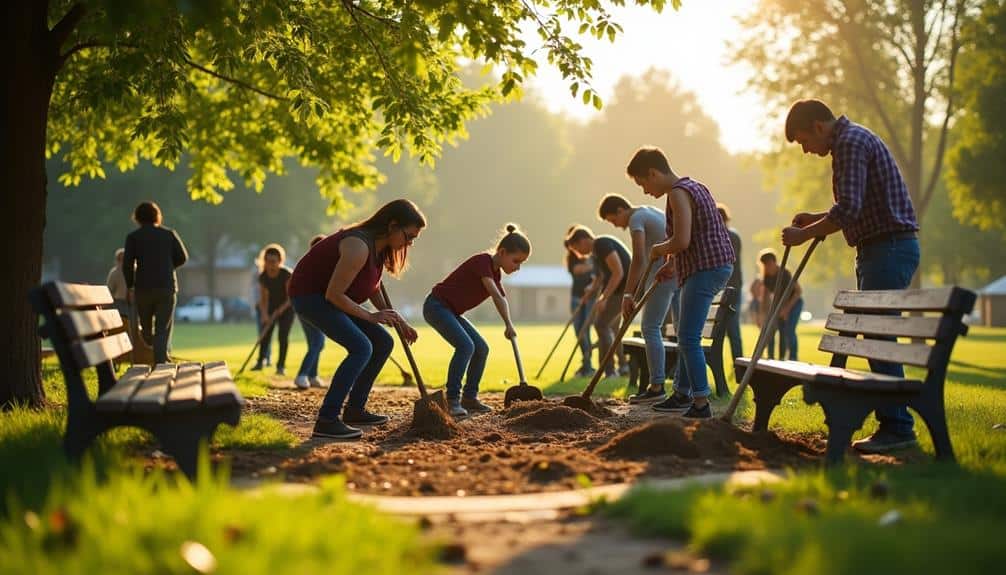Russia’s Subbotnik, a tradition dating back to 1919, exemplifies the enduring spirit of community service and collective action. Initially aimed at improving public spaces through voluntary efforts, Subbotnik evolved into a significant state-supported activity during the Soviet era, embodying the ethos of socialist unity. In contemporary times, this practice has reverted to its grassroots origins, focusing on local engagement through environmental cleanups and community gardening. The legacy of Subbotnik underscores the profound cultural significance of community bonds and collective responsibility.
Origins of Subbotnik

The origins of Subbotnik can be traced back to the early days of Soviet Russia, specifically to April 1919 at the Moscow-Sortirovochnaya railway depot. This initiative was rooted in the Bolshevik’s broader ideological campaign to galvanize the populace through communal labor.
Within this historical context, Subbotnik epitomized early Bolshevik initiatives aimed at fostering community engagement and promoting the ethos of collective effort.
Emerging from a period marked by intense labor movements and a drive for societal restructuring, Subbotnik was designed to instill a sense of civic responsibility among citizens. The voluntary nature of the first event, where workers dedicated their Saturdays to improve public spaces, underscored the Bolsheviks’ aspiration to create a new social order based on mutual cooperation and public good.
The significance of Subbotnik extended beyond mere physical labor; it was emblematic of a transformative period in Soviet Russia.
It encapsulated a pivotal moment when civic engagement was harnessed as a tool for societal reconstruction. This initiative not only represented the practical implementation of socialist ideals but also sought to entwine the populace in a shared mission of national rejuvenation.
Consequently, Subbotnik’s origins reflect a unique interplay between labor, ideology, and community in early Soviet society.
Subbotnik During the Soviet Era
Subbotnik has transformed from its early beginnings into a widely recognized practice, especially during the Soviet era, showcasing a strong commitment to community engagement. This initiative was embraced by the government as a means to encourage mass participation, presenting Subbotniks as symbols of unity and collective effort. By involving citizens in various community projects, the state aimed to cultivate a sense of shared purpose and social cohesion, aligning individual contributions with broader community goals.
During this time, Subbotniks became popular events often scheduled around significant holidays, enhancing their visibility and participation. Citizens engaged in diverse activities such as cleaning public areas and maintaining local infrastructure, which were framed as vital for public health and the welfare of the community.
The focus on collective labor not only contributed to improving local environments but also fostered a cultural ethos of communal responsibility. This practice highlights the positive aspects of community service, demonstrating how collective efforts can lead to tangible benefits for society while promoting social bonds among participants.
Modern-Day Subbotnik

Today, Subbotniks are emblematic of civic engagement, with activities ranging from environmental cleanups and the creation of community gardens to organizing local festivals. This shift aligns with a broader societal emphasis on autonomy and collective responsibility rather than state-mandated participation.
Volunteer initiatives are now at the heart of contemporary Subbotniks, reflecting the populace’s growing interest in grassroots movements and sustainable development.
Environmental cleanups, for instance, have become a cornerstone activity, addressing urban pollution and fostering a sense of ownership over public spaces. Community gardens serve as another key component, promoting local agriculture and providing green spaces that enhance urban living.
Local festivals held during Subbotniks further amplify their community-building potential, offering a platform for cultural exchange and social cohesion.
These events encourage volunteerism and highlight the importance of collective effort in achieving communal goals. Therefore, modern-day Subbotniks serve as a demonstration of the enduring value of civic engagement, adapted to the needs and freedoms of contemporary society.
Cultural Significance and Legacy of Subbotnik
Although modern-day Subbotniks have evolved from their Soviet-era origins, their cultural significance and legacy remain deeply embedded in Russian society. The historical evolution of Subbotnik from a politically driven, state-mandated activity to a voluntary act of community service underscores its enduring cultural impact.
Originally conceived as a method to promote socialist values, Subbotnik has shifted into a symbol of collective effort that transcends political ideology. The practice fosters community unity by bringing individuals together for common goals, such as cleaning parks, planting trees, and maintaining public spaces.
This collective labor not only addresses immediate environmental concerns but also enhances environmental awareness among participants. By engaging in these activities, volunteers are motivated by a sense of civic responsibility and the tangible benefits of their efforts.
Subbotnik’s legacy is evident in its ability to adapt to contemporary societal values while retaining its core objective of communal betterment. The shift towards voluntary participation reflects a broader societal emphasis on freedom and individual choice.
Subbotnik Represents Ongoing Community Spirit in Russia

The enduring tradition of Subbotnik in Russia exemplifies the persistent community spirit that thrives among its citizens. Rooted in the collective labor initiatives of the early 20th century, Subbotniks have evolved into modern expressions of civic responsibility and community engagement. Today, these volunteer opportunities serve as a demonstration of the enduring value Russians place on social cohesion and environmental impact.
Subbotniks offer a platform for community members to actively participate in the maintenance and beautification of their surroundings. Activities such as cleaning parks, planting trees, and repairing communal areas underscore a collective commitment to enhancing the quality of public spaces. This hands-on approach not only fosters environmental stewardship but also strengthens bonds within the community.
The shift from state-mandated labor to voluntary participation reflects a broader societal change, emphasizing individual agency and community empowerment. By engaging in Subbotniks, citizens exercise their freedom to contribute positively to their local environment, reinforcing a sense of shared responsibility and pride.
This revival of Subbotniks in contemporary Russia highlights the potential for voluntary initiatives to cultivate a spirit of unity and mutual support, essential elements in the fabric of a thriving, free society.




